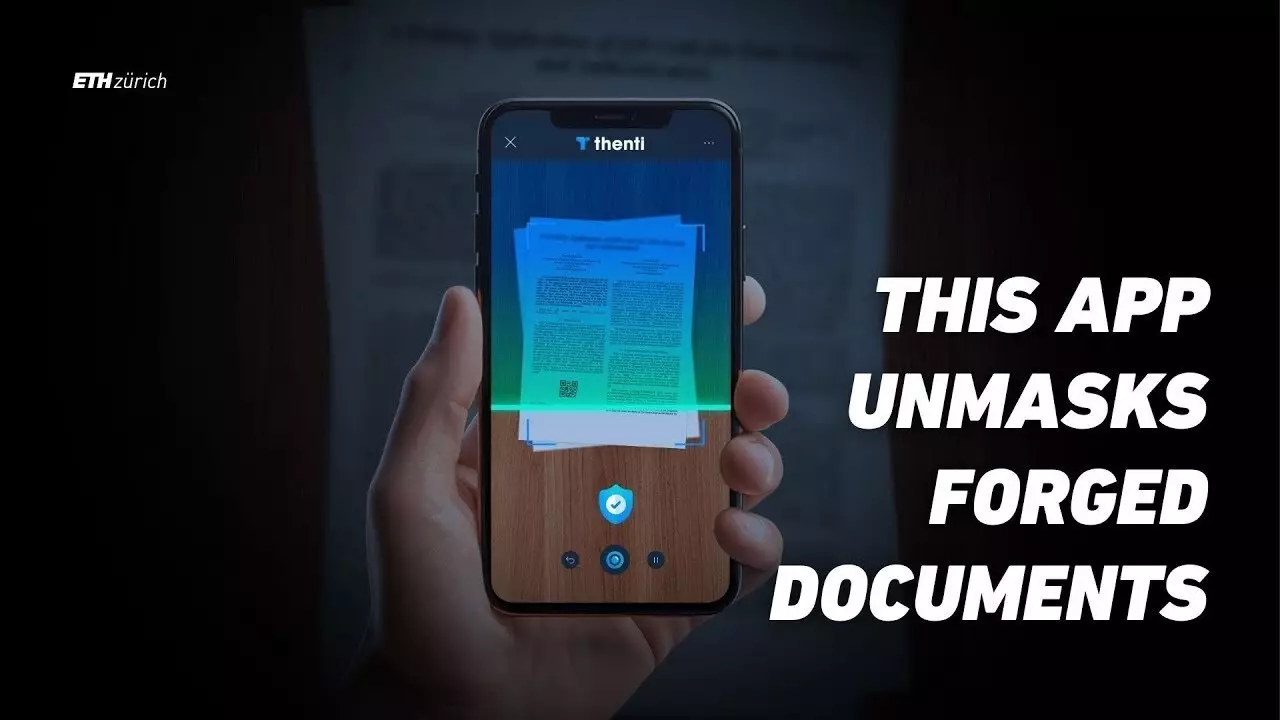In a world where the authenticity of documents and items is constantly under threat from forgers, researchers at ETH Zurich have developed a groundbreaking smartphone app that could potentially change the way we verify the legitimacy of important paperwork. The app, which is simple in principle yet complex in technology, aims to combat the growing issue of document forgery by providing a foolproof method of verification.
The app works by utilizing QR codes that are embedded in the documents by the issuing organization. The original document is saved in encrypted form on a server, and a printed copy is sent to the recipient. When someone wishes to verify the authenticity of the document, they open the organization’s verification app, scan the QR code, and film the document until the app confirms its legitimacy. The app compares the filmed images with the original and highlights any discrepancies in real time, ensuring that only relevant differences are flagged.
Despite the advancements in digital authentication, the need for physical documents remains prevalent in today’s world. The co-founder of the ETH spin-off company behind the app, Martín Ochoa, emphasizes the importance of bridging the gap between the digital and physical realms. With more QR codes and augmented reality applications entering the market, the demand for authentication technologies that cater to both worlds is increasing.
The prevalence of document forgery is a significant issue, with reports of large-scale operations selling forged academic certificates for millions of dollars. In Switzerland, the City of Zurich faces challenges with document forgery in the context of debt enforcement proceedings. Landlords and other entities often rely on documents from the debt enforcement register to make informed decisions, leading to a high number of enquiries about potential forgeries.
Recognizing the potential of the smartphone app to address their problem, the debt enforcement offices of the City of Zurich have decided to deploy the solution in March 2024. If successful, the technology could be expanded to other areas within the city and potentially to debt enforcement offices throughout Switzerland. The pilot project aims to not only streamline the authentication process but also contribute to trust and security in document verification.
The team behind the smartphone app is working on expanding its capabilities to include the verification of three-dimensional objects, in addition to two-dimensional documents. The app’s technology promises to identify subtle differences in even the highest quality products, making it a versatile tool for various authentication needs. As the app continues to evolve, its potential for combating document forgery in various industries is immense.
The smartphone app developed by researchers at ETH Zurich represents a significant advancement in document authentication technology. By combining the digital and physical worlds, the app offers a comprehensive solution to the challenge of document forgery. As the technology continues to mature and expand its capabilities, the future of document verification looks promising.


Leave a Reply